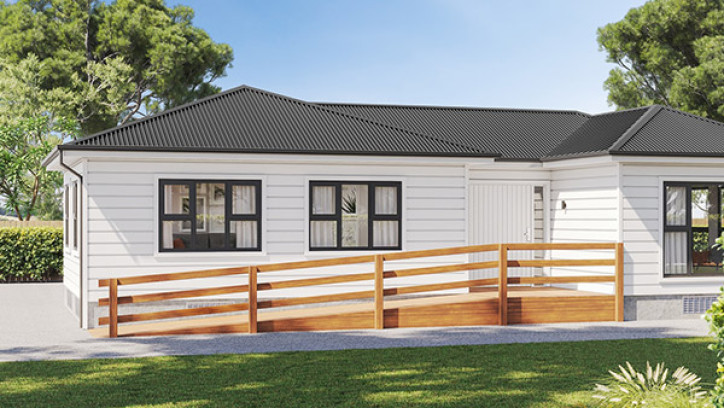3.2 Alteration to entrance or internal doorway to facilitate access for persons with disabilities

A building consent is usually not required for building work on an existing entrance or internal doorway to improve access for people with disabilities.
This exemption enables you to alter existing residential dwellings to improve access for people with disabilities. Some common examples of this are modifying doorways to allow better wheelchair access and installing access ramps. For the purpose of this exemption, 'semi-detached dwellings' includes row or terraced housing but excludes multi-unit dwellings where one unit is above another.
This exemption does not cover construction of accessible or wet area showers.
New door openings are also outside its scope but may be covered under exemption 8 (section 3.1) (windows and exterior doorways in existing dwellings and outbuildings).
Note: if you are constructing a ramp or platform as part of this building work, you will need to install a safety barrier at any point where there is a fall of 1 metre or more, as required by Building Code clause F4 – Safety from falling.
What is exempt
- An existing entry to a dwelling has a door with a window on either side of it, both within an aluminium frame. The entire aluminium frame can be removed and replaced with a wider door and a single window to allow better access.
- A dwelling's existing internal doorway needs to be widened to improve accessibility. The door is located in a wall that is load-bearing and contains a bracing element. The opening can be widened without needing a building consent.
- A home owner builds a ramp to provide access to a dwelling. At its highest point the ramp is 1.8 metres above ground level. Although a building consent is not required, they will have to install a safety barrier where there is a fall of 1 metre or more.
What needs consent
- An owner wants to create a new external door opening to improve access to a dwelling. This is outside the scope of this exemption as it is not a modification of an existing door. However, it may be exempt under exemption 8 (section3.1) (windows and exterior doorways in existing dwellings and outbuildings).
- A building owner wants to construct a new door through an internal bracing wall. This will require a building consent as the proposed building work is not a modification of an existing door.
What the law says
9. Alteration to existing entrance or internal doorway to facilitate access for persons with disabilities
Building work in connection with an existing entrance or internal doorway of a detached or semi-detached dwelling to improve access for persons with disabilities.